An American Risorigmento Part 3: A Red World HOI4 (Slightly Modified) RCAS AAR
Game: Hearts of Iron IV
Published: 2017-10-18, edited: 2018-05-27
I added some extra flavor with the "Bloody Fourth of July"
Part of the campaign:
An American Risorigmento

Despite the annexation of the Midwest Union, the Republic of Confederate American States still wasn't in full control of the Great Plains. The last obstacle to dominance over the Great Plains was the white-nationalist enclave of Montana, despite the state also encompassing large portions of Wyoming and North Dakota.
Led by Harold Covington, an American veteran, former resident of Rhodesia, and Neo-Nazi activist, the Montanans, similar to their cousins in the Union of Lincoln, prided themselves as a homeland for whites, especially for those fleeing the Communist regime of the UAPR.
At first, the RCAS attempted to woo the Montanans to the National-Jeffersonian cause of reunifying America and would do so for the rest of the summer of 2011.
Another controversy involving vexillar matters would rear up in the American Republic.
Led by Harold Covington, an American veteran, former resident of Rhodesia, and Neo-Nazi activist, the Montanans, similar to their cousins in the Union of Lincoln, prided themselves as a homeland for whites, especially for those fleeing the Communist regime of the UAPR.
At first, the RCAS attempted to woo the Montanans to the National-Jeffersonian cause of reunifying America and would do so for the rest of the summer of 2011.
Another controversy involving vexillar matters would rear up in the American Republic.
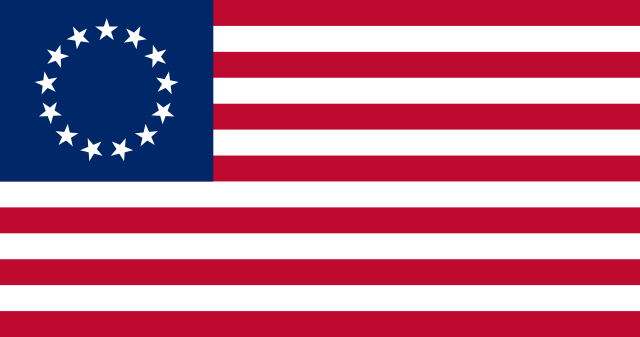
The Fourth of July was celebrated in every American nation with the exception of Texas and Utah celebrating their own independence days and the UAPR banning the holiday as reactionary.
Montanans and Lincolnians observe the holiday as an important step in establishing a white American identity, while the American Republic and Republic of Confederate American States set up elaborate and massive festivals dedicated to Independence Day. It almost became a competition as patriots on both sides of the border engaged in displays of fireworks and military parades to determine which American successor state was the most patriotic. Certain critics of the grandiose competition compared it to a "dick-measuring contest".
Controversy emerged in the American Republic as to which flag to wave. Republicans supported the waving of the fifty-star flag and the old American Republic banner, whilst the Independence Union Party wanted to wave the Betsy Ross flag and the IUP version of it. National-Jeffersonians of the Southern underground wing of the FLLCA, various labor unions, and even some elements of the Ku Klux Klan waved the flag of the RCAS, mostly in their own events before or after waving the Betsy Ross flag in the official events. Those that did wave the "Nazjef Banner" publicly found themselves forcibly removed from event or attacked by radical black refugees, who also despised any celebration of "racist white supremacist construct known as Amerika".
The RCAS, on the other hand, didn't seem to mind the American Republic flags being waved on their side of the border, due to the similarity of the flag to one of the proposed RCAS flags. Another major difference between the RCAS celebrations and the American Republic celebrations was that the former celebrated the Articles of Confederation and figures of the Shays and Whiskey Rebellion along with founders like Thomas Jefferson who were sympathetic to the antifederalist cause, with any trace of Federalist "traitors of the Revolution" forcibly removed from any official celebrations. Meanwhile, the American Republic, still including Thomas Jefferson, celebrated the Constitution and the Federalist founding fathers.
Montanans and Lincolnians observe the holiday as an important step in establishing a white American identity, while the American Republic and Republic of Confederate American States set up elaborate and massive festivals dedicated to Independence Day. It almost became a competition as patriots on both sides of the border engaged in displays of fireworks and military parades to determine which American successor state was the most patriotic. Certain critics of the grandiose competition compared it to a "dick-measuring contest".
Controversy emerged in the American Republic as to which flag to wave. Republicans supported the waving of the fifty-star flag and the old American Republic banner, whilst the Independence Union Party wanted to wave the Betsy Ross flag and the IUP version of it. National-Jeffersonians of the Southern underground wing of the FLLCA, various labor unions, and even some elements of the Ku Klux Klan waved the flag of the RCAS, mostly in their own events before or after waving the Betsy Ross flag in the official events. Those that did wave the "Nazjef Banner" publicly found themselves forcibly removed from event or attacked by radical black refugees, who also despised any celebration of "racist white supremacist construct known as Amerika".
The RCAS, on the other hand, didn't seem to mind the American Republic flags being waved on their side of the border, due to the similarity of the flag to one of the proposed RCAS flags. Another major difference between the RCAS celebrations and the American Republic celebrations was that the former celebrated the Articles of Confederation and figures of the Shays and Whiskey Rebellion along with founders like Thomas Jefferson who were sympathetic to the antifederalist cause, with any trace of Federalist "traitors of the Revolution" forcibly removed from any official celebrations. Meanwhile, the American Republic, still including Thomas Jefferson, celebrated the Constitution and the Federalist founding fathers.
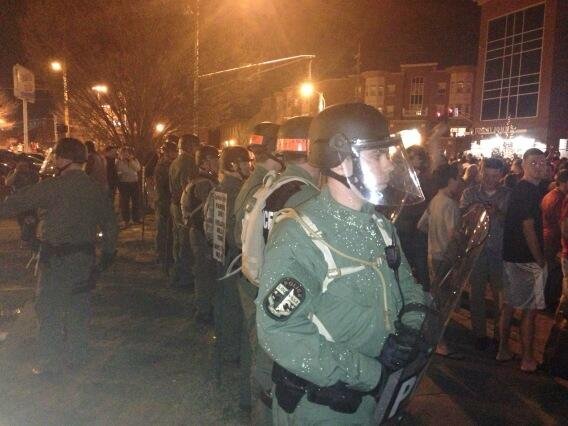
Still, the controversy in the South ultimately led to tragedy as a Fourth of July event in Louisville, across the border from the RCAS. Many pro-RCAS elements from the trade unions, KKK, the National Renewal party, and "citizens militias" waved RCAS flags along with the Betsy Ross flags, which caused local police to attempt to escort them out of the official event to prevent a public disturbance. After being escorted out and the police left the scene, armed gangs of black refugees drove in their vehicles and opened fire on the crowd of ultranationalists, with UAPR flags and black nationalist tricolors waving atop their vehicles. The armed RCAS-supporters, some of whom were already injured or killed, immediately took out their weapons, got into cover, and started firing back at the black gunmen.
Immediately, the local police returned, this time with SWAT support. Tear gas and rubber bullets were fired onto both sides of the firefight as riot police and SWAT teams attempted to arrest both the RCAS-supporters and black gunmen. There was difficulty getting the RCAS-supporters to stand down and drop their arms, whilst the black drive-by shooters attempted to drive away, firing at the police. Armored SWAT cars and helicopters engaged in a high-speed car chase with the black nationalists, which ended in either the deaths or arrests of all the gunmen involved.
Due to the excessive amount of police focus on the firefight, the Louisville police forces were too spread out to properly guard the Fourth of July event from the black protestors, who swarmed the streets and overwhelmed the few patrols. The violent protests, involving chants of "Black Power!" and "Death to the white cracka!", soon led to full on riots. Participants of the Fourth of July event, regardless of political affiliation and even race, were assaulted by crowds of refugees. Stores were looted, while American flags of all varieties were burned. Union halls also found themselves victim to the wrath of the black activists, who found labor unions to be a white supremacist influence due to the RCAS. It was a strange irony that black communists were shouting "Scab Pride!" as they burned down labor union halls, whilst the business headquarters of major American companies surprisingly remained well-intact.
The crisis level situation, born from racial tensions emerging from the mass immigration of black refugees from the North, caused the State of Kentucky to immediately send in the National Guard. Crowds, who were celebrating Independence Day, found themselves fleeing the scene or finding a safe spot away from the rioters. Churches, even those operated by blacks, opened their doors to provide safe havens from the rioters.
Obviously, the fireworks and the rest of the Fourth of July event was cancelled due to the interruption. Enraged, some armed members of the crowds actively hunted down and performed "citizens arrests" on the black rioters, which often escalate into shootouts. The local paramilitaries often joined to aid the armed citizens, and men dressed in KKK hoods opened fired on crowds of rioters, leaving right before the National Guard would arrive. Store owners would often guard their stores as the city almost descended into a race war.
By the time the National Guard arrived and restored order, nearly 100 people were killed and over 500 injured from the brutal fighting. A state of national emergency was declared in the American Republic as the "Bloody Fourth of July" reached national news.
Immediately, the local police returned, this time with SWAT support. Tear gas and rubber bullets were fired onto both sides of the firefight as riot police and SWAT teams attempted to arrest both the RCAS-supporters and black gunmen. There was difficulty getting the RCAS-supporters to stand down and drop their arms, whilst the black drive-by shooters attempted to drive away, firing at the police. Armored SWAT cars and helicopters engaged in a high-speed car chase with the black nationalists, which ended in either the deaths or arrests of all the gunmen involved.
Due to the excessive amount of police focus on the firefight, the Louisville police forces were too spread out to properly guard the Fourth of July event from the black protestors, who swarmed the streets and overwhelmed the few patrols. The violent protests, involving chants of "Black Power!" and "Death to the white cracka!", soon led to full on riots. Participants of the Fourth of July event, regardless of political affiliation and even race, were assaulted by crowds of refugees. Stores were looted, while American flags of all varieties were burned. Union halls also found themselves victim to the wrath of the black activists, who found labor unions to be a white supremacist influence due to the RCAS. It was a strange irony that black communists were shouting "Scab Pride!" as they burned down labor union halls, whilst the business headquarters of major American companies surprisingly remained well-intact.
The crisis level situation, born from racial tensions emerging from the mass immigration of black refugees from the North, caused the State of Kentucky to immediately send in the National Guard. Crowds, who were celebrating Independence Day, found themselves fleeing the scene or finding a safe spot away from the rioters. Churches, even those operated by blacks, opened their doors to provide safe havens from the rioters.
Obviously, the fireworks and the rest of the Fourth of July event was cancelled due to the interruption. Enraged, some armed members of the crowds actively hunted down and performed "citizens arrests" on the black rioters, which often escalate into shootouts. The local paramilitaries often joined to aid the armed citizens, and men dressed in KKK hoods opened fired on crowds of rioters, leaving right before the National Guard would arrive. Store owners would often guard their stores as the city almost descended into a race war.
By the time the National Guard arrived and restored order, nearly 100 people were killed and over 500 injured from the brutal fighting. A state of national emergency was declared in the American Republic as the "Bloody Fourth of July" reached national news.
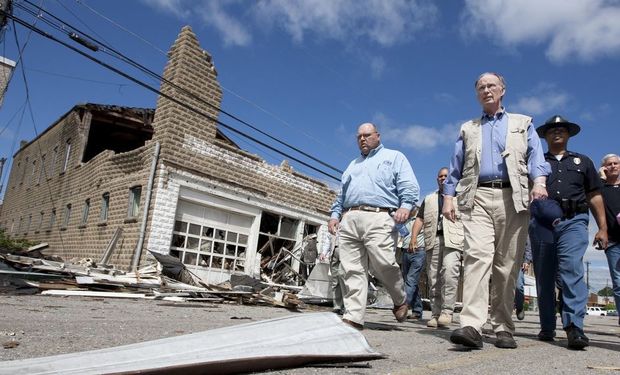
Once lauded as a humanitarian achievement, the decision by the IUP to take in refugees from the North became an embarrassment to the party. Polls for the IUP dropped by nearly 10% from the disaster. The Republicans took up a fervently anti-refugee stance, favoring the deportation of potentially black-nationalist or communist refugees. Meanwhile, the National Renewal Party and FLLCA both surged in numbers, with talks of a coalition between the two parties potentially being competitive to both the GOP and IUP in Congress.
It was soon found out that the whole incident was a combination of a terrorist attack and a protest, hoping to terrorize the American populace into aiding the plight of blacks and to have revenge for the brutal ethnic cleansing campaigns of the RCAS. Intelligence sources also found that the UAPR provided aid to the underground black nationalist groups responsible for organizing the attack. This soured relations between the American Republic and the UAPR.
Rumors were made that the RCAS were actually planning on "liberating" Louisville by storming the city with Minutemen divisions and having the National-Renewal dominated Kentuckan state-government secede from the American Republic, but there is no evidence to support such a conclusion.
It was soon found out that the whole incident was a combination of a terrorist attack and a protest, hoping to terrorize the American populace into aiding the plight of blacks and to have revenge for the brutal ethnic cleansing campaigns of the RCAS. Intelligence sources also found that the UAPR provided aid to the underground black nationalist groups responsible for organizing the attack. This soured relations between the American Republic and the UAPR.
Rumors were made that the RCAS were actually planning on "liberating" Louisville by storming the city with Minutemen divisions and having the National-Renewal dominated Kentuckan state-government secede from the American Republic, but there is no evidence to support such a conclusion.
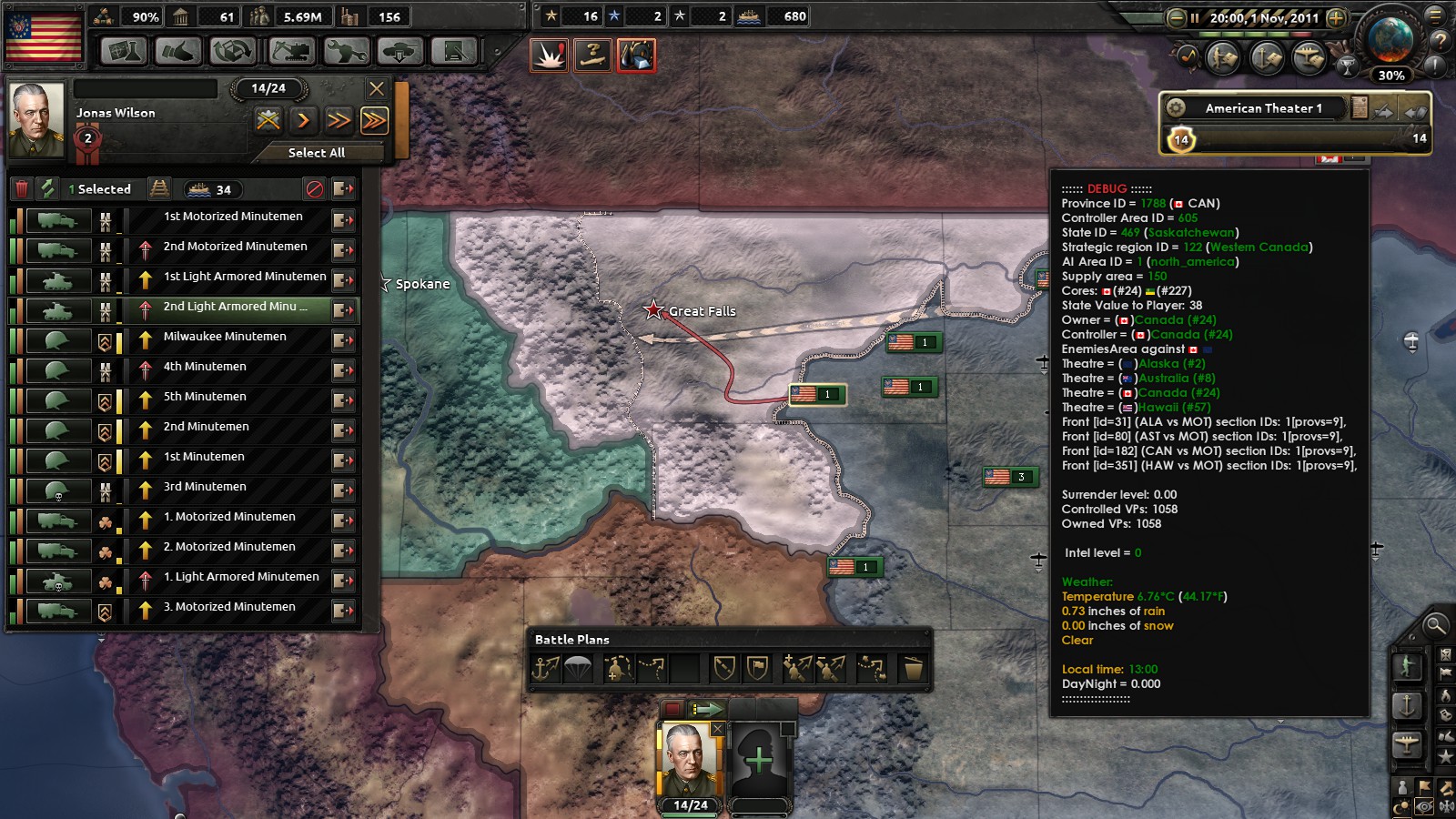
Returning to the relationship between Montana and the Republic of Confederate American States, the Montanan populace were initially slightly skeptical that the Nazjef movement's goals were possible with the current state of the nation, despite their successes in the North following their victory over the APC. However, the "Bloody Fourth of July" immediately galvanized the Montanan white nationalists to the favor of the RCAS. It is downright treachery to let whites in the South suffer from "black brutality" whilst living in isolation.
However, Harold Covington was not convinced, and, being essentially a de facto military dictator in Montana, he rejected all attempts to join the "White Bolshevik" RCAS. He would make conspiracy theories that the RCAS and the Union of Lincoln under Richard Spencer were planning on turning America into something like the Soviet Union. The neo-Nazi figure also claimed that the "Strasserism" of the RCAS and Richard Spencer focused too much on the literal political-economic "National Socialism" instead of the "spiritual" National-Socialism pioneered by George Lincoln Rockwell, according to his vision.
Increasingly, Harold Covington grew hostile to the RCAS, despite most of his supporters imploring him to join the Union. The Union of Lincoln and the RCAS were declared large-scale Jewish honeypots while declaring that it would be impossible to create a white homeland spanning the entire United States.
Eventually, war was inevitable, as the RCAS abandoned all hope of convincing Harold and was impatient to wait for a rebellion.
During Halloween night, the Minutemen of the RCAS engaged in "Operation Trick or Treat", invading Montana. Despite Harold's calls to rally the troops of the local militias, they refused to take up arms and even welcomed the invading RCAS forces, providing them with candy. Farms would give the Minutemen caramel apples and other sweets.
The only opposition faced by the RCAS was Harold Covington himself along with his personal retinue of fanatics in his compound just outside of Great Falls. He held out impressively for approximately 7-10 hours, inflicting 38 kills on the advancing RCAS forces while his retinue killed another 50 Minutemen. The battle ended with the Covington and his entire retinue eliminated, his compound almost completely annihilated by artillery and aerial bombardment.
However, Harold Covington was not convinced, and, being essentially a de facto military dictator in Montana, he rejected all attempts to join the "White Bolshevik" RCAS. He would make conspiracy theories that the RCAS and the Union of Lincoln under Richard Spencer were planning on turning America into something like the Soviet Union. The neo-Nazi figure also claimed that the "Strasserism" of the RCAS and Richard Spencer focused too much on the literal political-economic "National Socialism" instead of the "spiritual" National-Socialism pioneered by George Lincoln Rockwell, according to his vision.
Increasingly, Harold Covington grew hostile to the RCAS, despite most of his supporters imploring him to join the Union. The Union of Lincoln and the RCAS were declared large-scale Jewish honeypots while declaring that it would be impossible to create a white homeland spanning the entire United States.
Eventually, war was inevitable, as the RCAS abandoned all hope of convincing Harold and was impatient to wait for a rebellion.
During Halloween night, the Minutemen of the RCAS engaged in "Operation Trick or Treat", invading Montana. Despite Harold's calls to rally the troops of the local militias, they refused to take up arms and even welcomed the invading RCAS forces, providing them with candy. Farms would give the Minutemen caramel apples and other sweets.
The only opposition faced by the RCAS was Harold Covington himself along with his personal retinue of fanatics in his compound just outside of Great Falls. He held out impressively for approximately 7-10 hours, inflicting 38 kills on the advancing RCAS forces while his retinue killed another 50 Minutemen. The battle ended with the Covington and his entire retinue eliminated, his compound almost completely annihilated by artillery and aerial bombardment.
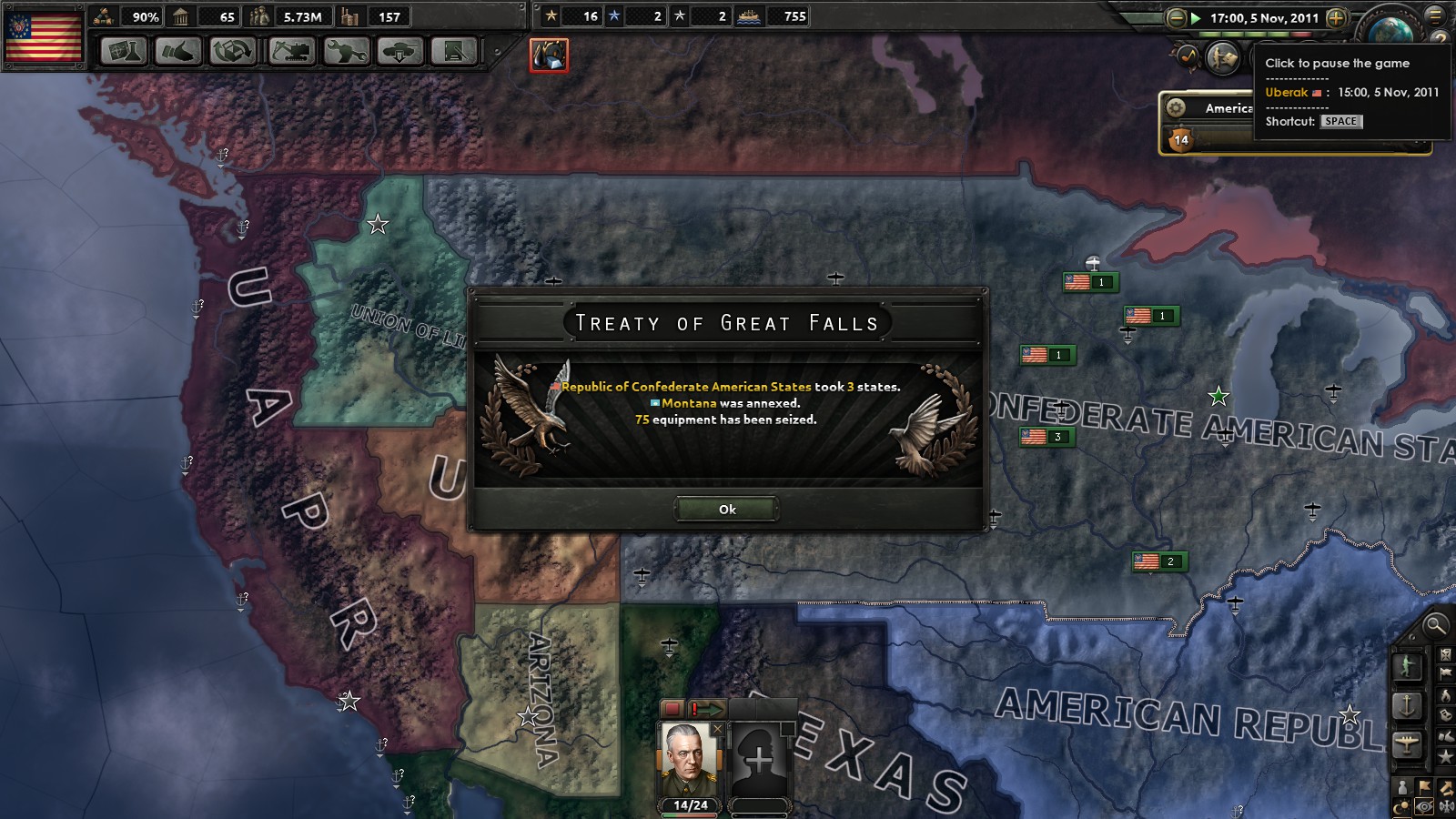
By November 5th, the Compact of Great Falls was signed by Montana militiamen and RCAS Minutemen, integrating Montana into the Union as a state.
So far, every opposition to the RCAS so far as has been eliminated in a quick and decisive war, almost mimicking the German blitzkrieg of the Second World War. The RCAS is now reaching into even the Rockies and is by far the most expansive of the American successor states.
So far, every opposition to the RCAS so far as has been eliminated in a quick and decisive war, almost mimicking the German blitzkrieg of the Second World War. The RCAS is now reaching into even the Rockies and is by far the most expansive of the American successor states.



